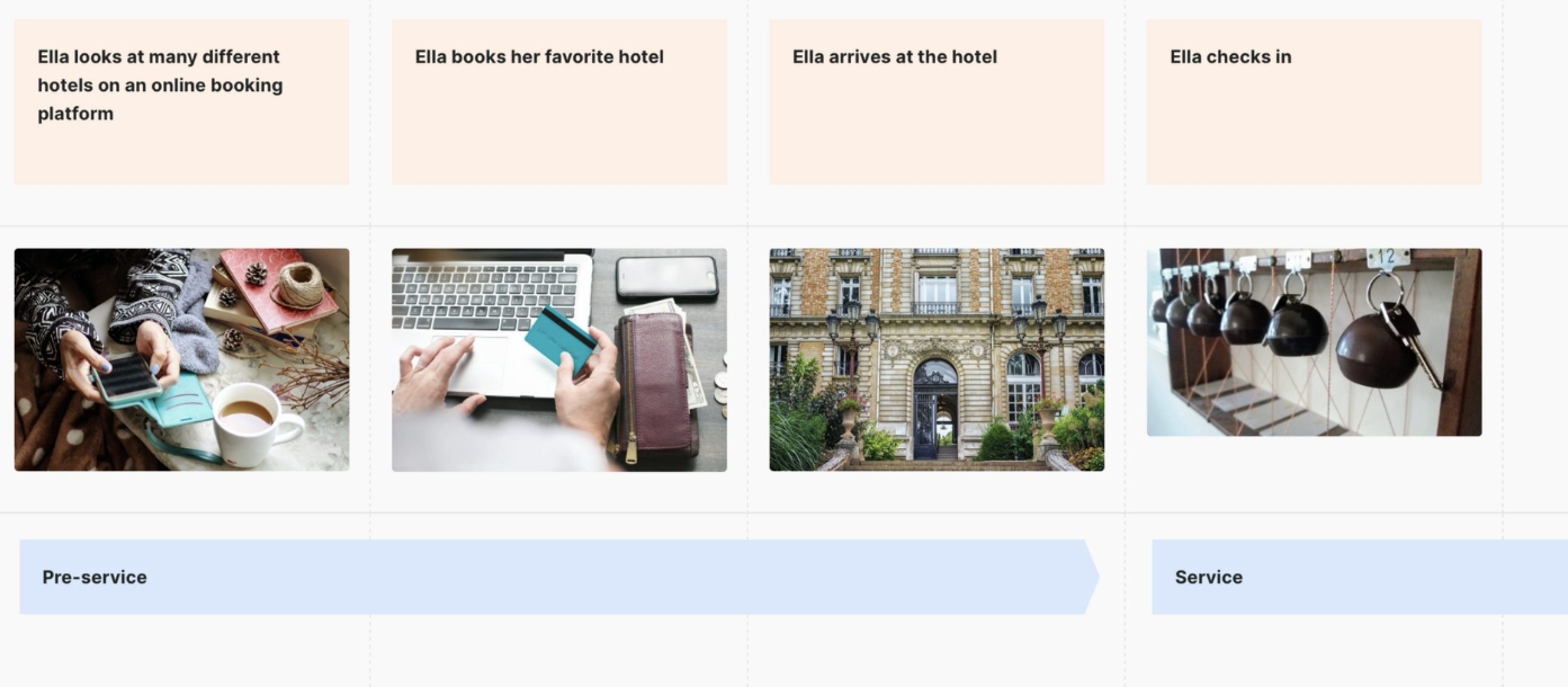Navigating excellence: crafting a Hotel Customer Journey Map for unforgettable stays
In the realm of hospitality, delivering exceptional guest experiences is paramount. Hoteliers keen on leaving a lasting impression need to understand every touchpoint a guest encounters during their stay. This understanding is where the concept of the hotel customer journey comes into play. By charting out each phase of a guest's experience, hoteliers can fine-tune their services to perfection. In this article, we'll delve into the essence of a hotel customer journey map, providing a comprehensive guide on its creation and sharing an example.
Overview
- What is the hotel journey?
- What is a hotel customer journey map?
- Example of a hotel guest journey
- How to create a hotel guest journey
- Key take aways
What is the Hotel Customer Journey?
The hotel customer journey refers to the complete sequence of interactions and experiences that a guest goes through, from the initial awareness of a hotel's existence to the post-stay engagement.
This journey encompasses various stages, including researching the hotel, making a booking, arriving at the property, experiencing the services and amenities, checking out, and providing feedback. The emotions, guest wants and needs, and expectations of the guest evolve at each stage, influencing their overall perception of the hotel and their likelihood of returning or recommending it to others.
What is a Hotel Customer Journey Map?
A hotel customer journey map, or guest journey map, is a visual representation that illustrates of the guest's voyage through the hotel's services – the step-by-step process a guest follows when interacting with a hotel, from the very beginning of their research to well after their stay. It outlines key touchpoints, emotions, actions, and pain points that the guest encounters at each stage of their journey.
A hotel customer journey map is an important strategic tool; it provides insights into the guest's expectations, needs, and sentiments, thus providing a holistic view of the guest's experience. It also helps to assess if a hotel fulfills all service standards at all touchpoints. These insights enable hoteliers to identify opportunities for improvement and create or refine their strategies to enhance guest satisfaction and create memorable experiences.

Example of a Hotel Guest Journey
Let's consider a typical hotel guest journey to illustrate the concept:
- Awareness: A potential guest discovers the hotel through online research.
- Consideration: The guest then proceeds to explore the hotel's website, reads reviews, and perhaps interacts with the hotel's social media accounts.
- Booking: Once the decision is made, the guest books a room.
- Arrival and check-in: Upon arrival, the guest is welcomed by the hotel staff.
- Service experience: Throughout the stay, the guest interacts with various touchpoints such as room service, concierge assistance, and housekeeping.
- Check-out : On the last day, the guest checks out and leaves the room and pays the bill.
- Post-stay engagement: The guest provides feedback or reviews.
Tip: for folks designing services for high-class hotels, our guide about customer experience of luxury might be a relevant read.
Here is an full example of a hotel customer journey map. This high-level map includes steps from pre-service until post-service. It visualizes the channels of communication that have been influencing the experience, as well as the customer satisfaction / emotion. A storyboard helps to quickly grasp the situation, as well as easily navigate the journey map.

For more examples, check out our collection of customer journey examples.
How to create a Hotel Guest Journey Map
To create a hotel journey map, you can use the following steps as your orientation:
- Identify the touchpoints: Begin by listing all the touchpoints a guest interacts with, from online channels to physical interactions.
- Segment phases: Divide the guest journey into key phases, such as Awareness, Consideration, Booking, Arrival, Stay, Check-out, and Post-Stay.
- Create a guest persona: Develop a guest persona to better understand their needs, preferences, and emotions at each phase.
- Plot emotions and actions: Alongside each phase, map out the guest's emotions, thoughts, and actions. For instance, during the "Arrival" phase, emotions could range from excitement to relief.
- Highlight pain points: Identify potential pain points where the guest experience could falter. These could include long check-in queues or unresponsive customer service.
- Craft solutions: Brainstorm solutions to address these pain points and enhance guest satisfaction. For instance, implementing a mobile check-in option could reduce wait times.
Key take aways
In the competitive landscape of the hospitality industry, understanding the nuances of guest experiences is indispensable. The hotel customer journey map serves as a guiding compass, enabling hoteliers to create remarkable stays for their guests. Through the phases of Awareness, Consideration, Booking, Arrival, Stay, Check-out, and Post-Stay Engagement, hoteliers can strategically enhance touchpoints, mitigate pain points, and craft memorable moments.
... and now?
Embark on the journey of crafting exceptional guest experiences by mapping their path to perfection!
With Smaply you can create your first hotel journey map – for free, forever.











